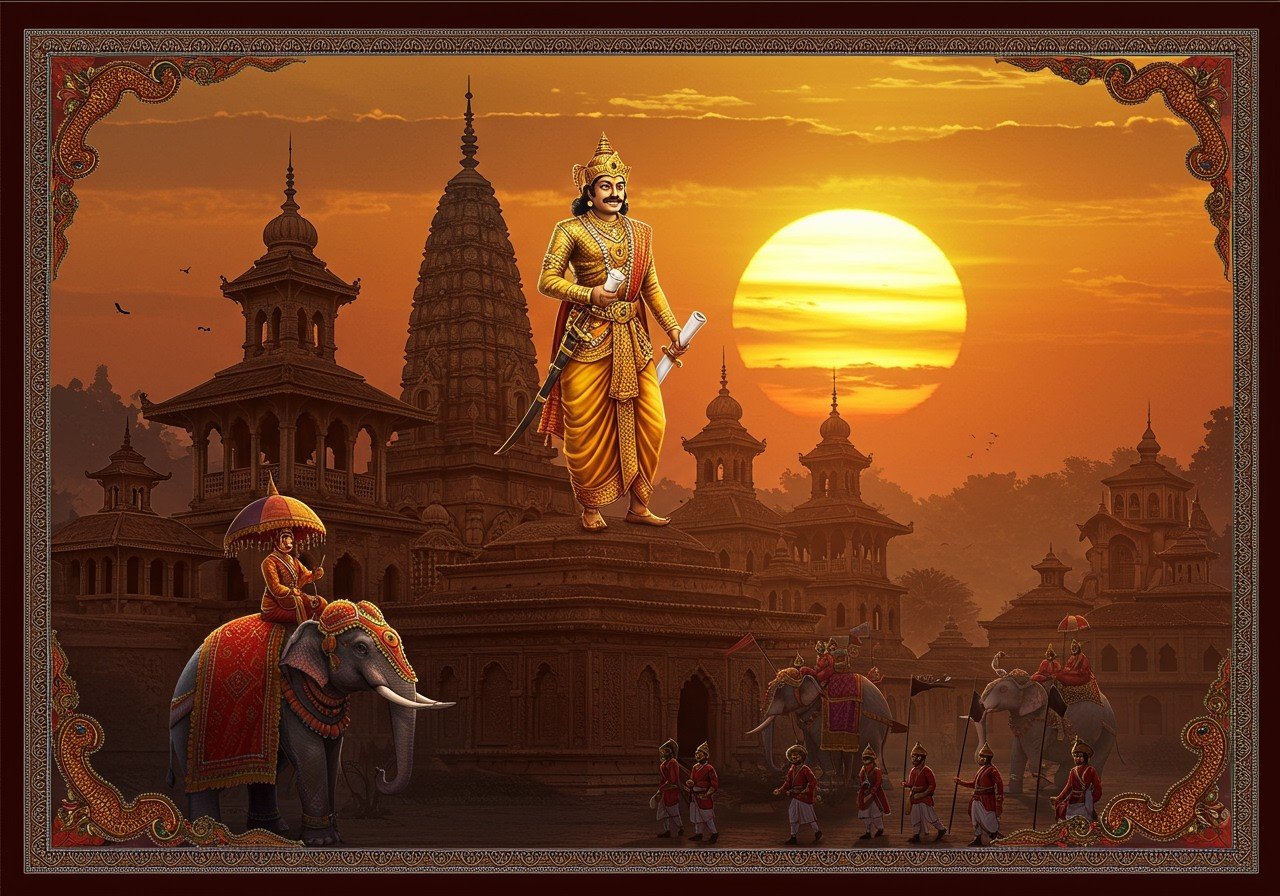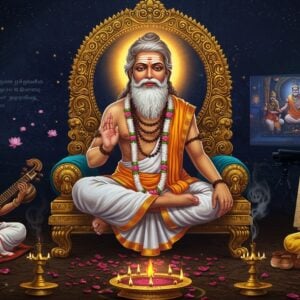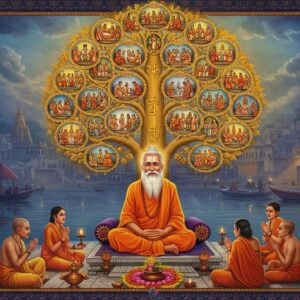
In the early 19th century, Swargadeo Purandar Singha led Assam, a land steeped in tradition and history. His time as ruler marked a period of change and resilience for the Ahom Kingdom, shaping Assam’s cultural identity even today. By understanding his struggles, we gain a deeper appreciation for his leadership and its profound impact on the region.
The Ahom Kingdom: A Legacy of Strength
For almost 600 years, starting in the 13th century, the Ahom Kingdom flourished in Assam. Known for their sharp minds in administration and military prowess, the Ahoms built a kingdom that stood the test of time. Their cultural contributions are immense, from championing Vaishnavism to creating architectural wonders. Their society was a tapestry of different ethnic groups, all woven together under their rule. The Tai-Ahom culture and language became cornerstones of Assam’s unique identity.
Swargadeo Purandar Singha: A Story of Resilience
Purandar Singha, the last king of the Ahom dynasty, lived a life as intricate as the Assamese silks, filled with both trials and victories. Born in Silmari, Bengal, his early life was marked by hardship. His family’s exile, due to failed attempts by his forefathers to claim the throne, instilled in him a deep sense of resilience.
In 1818, Ruchinath Burhagohain, recognizing Purandar Singha’s potential, placed him on the throne, replacing Chandrakanta Singha. However, this reign was brief, interrupted by the Burmese invasion of 1819. This invasion led to Purandar Singha’s removal and the Burmese-backed reinstatement of Chandrakanta Singha.
Undeterred, Purandar Singha sought the help of the British to reclaim his rightful place. His unwavering determination led to a second reign, from 1833 to 1838, after the British drove the Burmese out of Assam. He was appointed as a protected prince, ruling over Upper Assam (excluding Sadiya and Matak), with the condition of paying an annual tribute of 50,000 rupees.
Reigning from Jorhat: Administration and Challenges
During his second reign, Purandar Singha wisely chose Jorhat as his capital, a strategic move to consolidate his power. He dedicated himself to administrative reforms, aiming to make the government more effective and the lives of his people better. The Ahom nobility and local chieftains played key roles, although Purandar Singha carefully managed their influence.
He implemented a judicial system and reformed tax policies, striving for socio-economic stability. However, maintaining control proved challenging, especially with limited resources and the looming presence of external forces.
A Patron of Culture and Faith
Despite political turmoil, Purandar Singha remained deeply committed to reviving the cultural and religious life of his kingdom. He supported traditional Ahom festivals and rituals, adding to the richness of Assam’s cultural tapestry. His reign witnessed the construction of religious structures and the patronage of local artisans. Vaishnavism blossomed under his rule, bringing people together through shared faith. He also nurtured the Assamese language and literature, fostering a sense of unity among his people. Find authentic puja samagri and holy books at Poojn.in to connect with your spiritual heritage.
The End of an Era: Legacy and Remembrance
In 1838, the British took direct control of Upper Assam, citing Purandar Singha’s inability to govern effectively and pay the agreed-upon tribute. This marked the end of the Ahom dynasty’s 600-year reign. Assam was subsequently divided into the districts of Sibsagar and Lakhimpur. Purandar Singha’s attempts to revive Ahom customs during this period of British expansion are seen as a courageous act of cultural resistance. Understanding his legacy provides valuable insight into Assam’s rich history and the indomitable spirit of its people.
Poojn.in: Honouring Tradition
For those seeking to connect with the spiritual legacy of this era, Poojn.in offers a wide selection of authentic puja items and ritual materials. As India’s largest Dashakarma bhandar, we provide:
- Traditional brass and copper items used in Assamese rituals. These beautifully crafted pieces add a touch of authenticity to your puja. Explore our collection of traditional decoratives to enhance your spiritual space.
- Pure cotton gamochas and traditional textiles. Embrace the rich textile heritage of Assam with these authentic pieces, perfect for rituals and everyday use. Discover the perfect holy clothing for your puja needs.
- Authentic incense and dhoop from Northeast India. Create a sacred atmosphere with the fragrant aromas of traditional incense and dhoop. Browse our selection of flammables for your puja rituals.
- Puja items specific to regional worship practices. We understand the nuances of regional traditions. Find everything you need for your specific puja, sourced with care and respect.
Connect with us:
- Visit our website: www.poojn.in
- Call us: 03369029784
- WhatsApp: 9476142738
- Visit our store: Boardangi, East Belbari, Belbari, Gangarampur, South Dinajpur
Reflecting on a Legacy
Swargadeo Purandar Singha’s journey as the last king of the Ahom dynasty stands as a testament to resilience and unwavering commitment to heritage. Despite navigating political upheaval and colonial pressures, his dedication to preserving the rich traditions of his kingdom shone brightly. His efforts to revive cultural and religious practices helped forge a strong sense of identity among his people, leaving an enduring mark on Assam’s historical narrative. Though his reign concluded with the advent of British rule, Purandar Singha’s legacy continues to inspire, encouraging future generations to cherish and celebrate their heritage.
His story serves as a powerful reminder of the enduring spirit of Assam and its people, a spirit that continues to shape the region’s cultural landscape. Read more about the fascinating history of Hinduism on our blog: Hinduism: A Complete History and Origin and Hinduism: A Concise History and Exploration of its Origins.
Common Questions about Swargadeo Purandar Singha
What was Swargadeo Purandar Singha’s Ahom name? Swargadeo Purandar Singha’s Ahom name was Suremphaa. This name holds cultural and historical significance within the Ahom kingdom. Learning his Ahom name deepens our understanding of his place within the Ahom tradition.
Where was the capital during Swargadeo Purandar Singha’s reign? Jorhat served as the capital during Purandar Singha’s reign. It was a hub of administration and governance for the kingdom. Jorhat’s strategic location played a key role in Purandar Singha’s rule.
When did Swargadeo Purandar Singha reign? Swargadeo Purandar Singha ruled during two distinct periods: 1818-1819 and 1833-1838. Each period presented unique challenges and opportunities amidst a changing political landscape.
Why is Swargadeo Purandar Singha’s reign important in Ahom history? Purandar Singha’s reign is significant as it marks the Ahom dynasty’s final endeavor to reclaim control before British annexation. His reign symbolizes the kingdom’s resilience in the face of external pressures. This period of Ahom history holds valuable lessons about cultural preservation and resistance. Explore more about Assam’s pilgrimage sites in our blog: Ahobilam Temple: Significance and History Explained and Ahobilam Pilgrimage: A Modern Traveler’s Guide.
How did Swargadeo Purandar Singha come to power? Purandar Singha ascended to power with British support in 1833. However, his reign faced considerable difficulties as he struggled to maintain control and navigate the complex political dynamics of the time.
What challenges did Swargadeo Purandar Singha face during his reign? Swargadeo Purandar Singha faced numerous challenges, including internal dissent and external threats. Managing British influence while addressing local resistance presented significant hurdles. His reign was a constant balancing act between preserving tradition and adapting to changing circumstances.
What is the legacy of Swargadeo Purandar Singha’s reign? Swargadeo Purandar Singha’s legacy lies in his determined attempt to restore the Ahom dynasty’s rule. Despite the formidable challenges, his reign stands as a symbol of the Ahom kingdom’s strength and resilience. His story continues to resonate with those who value cultural heritage and the struggle for autonomy. You can bring a touch of this heritage into your home with handmade clay puja items and pure Hanuman sindoor available at Poojn.in.


